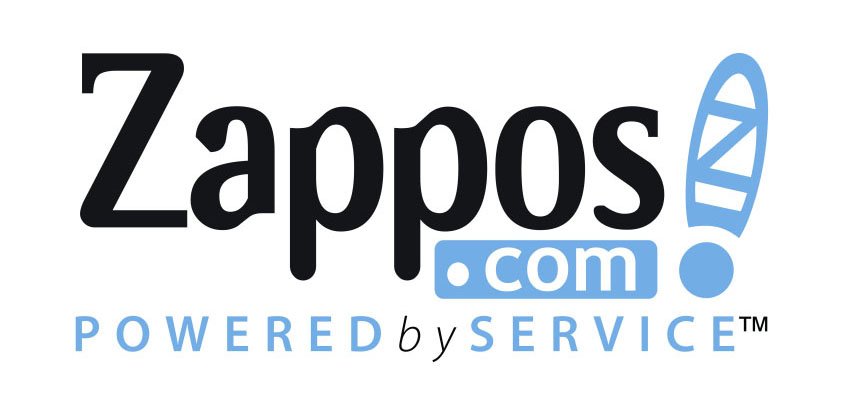The value of cultivating corporate culture

What is corporate culture?
For many, that’s a complicated question to answer. On a basic level, corporate culture refers to the underlying attitudes, beliefs, and values that guide the practices of a company. Culture helps to define and highlight brand image and direct brand strategy. It can even influence the way that you create your own brand manifesto.
In other words, corporate culture helps to define how your company is perceived. Not just by your customers, but your employees, your shareholders, and all the moving cogs that make up your business.
To some extent, your internal culture might be articulated in your vision statement and manifesto. After all, elements of corporate culture include the physical environment of a company, their HR practices, and more. Additionally, corporate culture is also identified by the level of emphasis placed on various defining business elements. It appears in innovation, processes, collaboration, social engagement, and community involvement.
You may think of corporate culture in line with brand storytelling. Your culture helps to craft the narrative for your business, and it also strengthens the foundation that helps to get your brand definition up and running. On top of that, a good corporate culture enhances the performance and value of your company.
For instance, a good culture helps employees to feel more motivated and engaged. This leads to a direct influence on the successful implementation of internal communications solutions, branding programs, marketing, advertising, campaigns, and more.
Corporate culture is important for all businesses, regardless of whether you’re running a traditional, remote, or hybrid team. In fact, company culture may be even more important to companies with distributed teams. In a remote company, a good culture helps to improve engagement, strengthen bonds between team members, and reduce turnover.
Even though we at Fabrik don’t focus exclusively on corporate culture, we recognise it to be an essential factor to success. That’s why we touch on it during the strategic phases of a rebrand, and our initial consultations. Here, we’re going to give you an insight into the true value of corporate culture, how you should define it, and what you can do to improve it in your business.

How to define corporate culture
To start this article, we asked: “What is corporate culture?”
Though we’ve given you an outline above to inform your personal definition, the term “corporate culture” is often at the heart of vigorous debates. Though universally, most people agree that corporate culture exists and that it plays a crucial role in shaping organisational behaviour, many people don’t fully understand why it’s so important.
The problem is, without a reasonable definition of corporate culture, you can’t hope to understand how it connects to other key elements of your organisation. Nor can you develop a systematic approach to maintaining, analysing, or developing cultures.
So, what shapes corporate culture?
At an elementary level, corporate culture defines your business behaviour. Sometimes, culture is shaped by incentives. After all, the best indicator of how someone will behave is the outcome of their behaviours. If you promise someone extra money, great benefits, and security as a result of hard work, then they’re far more likely to act accordingly.
Incentives can range from recognition to status promotions, to financial benefits, and they all help to promote positive action in a business. However, incentives aren’t the only important factor in corporate culture. A far more ingrained and important aspect of corporate culture is the “meaning” it gives to a company.
Corporate culture and performance go hand in hand because the right culture can serve as the glue that integrates the various members of an organisation. Your culture helps your staff members to define your company, and thus define themselves, and their role in the story you’re telling. It focuses on what makes your business unique. Though different businesses have different types of corporate culture, each helps the professional community to understand and navigate a professional structure.
Perhaps the one element that makes corporate culture so complex is the fact that it’s a dynamic concept. Cultures shift constantly in response to internal and external changes. That means that trying to define corporate culture means trying to hit a moving target. This is the reason why corporate culture consistency is so popular in today’s evolving business world.

Corporate culture and performance
Corporate culture and performance seamlessly co-exist because corporate culture is a collection of visions, values, and day-to-day behaviours for interaction that help a business move towards their goals. As you might have gathered from the section above, corporate culture is tough to define, and even tougher to accomplish properly. However, if you know how to do it right, corporate culture can make a huge difference to your business.
According to an article from Science Daily, corporate culture may actually be the most important business factor for driving innovation.
It can seem simplistic. After all, it’s hard to believe that something as simple as putting the right furniture into offices and hosting a company happy hour could help to boost productivity. However, the truth is that organisational culture has a direct impact on how happy, and fulfilled your workers feel.
Sometimes, introducing a corporate culture means recognising the value of your employees, and keeping them happy on the road to success. After all, if your employees feel as though they’re a crucial part of a growing dynamic, then they’re likely to work harder to achieve your organisational goals.

Additionally, the way culture operates within a company can help to inspire innovation and development. For instance, if your company culture focuses on facilitating creativity, then the chances are that your staff will be happy to share their ideas for development. People feel more comfortable speaking up, and taking chances if they know they’re going to be praised, and not chastised for it.
Perhaps the three most significant performance-based benefits of having a strong, unified company culture that underlies your business behaviours, include:
- A stronger brand identity: At Fabrik, we believe that brand identity is crucial in this world of decision overload and market saturation. Asking yourself “what is corporate culture”, and exploring the types of corporate culture in your industry can help you to set yourself apart from the crowd by identifying the values of your company. For instance, if your corporate culture prioritises setting and meeting goals, then your individual workers are more likely to set and achieve goals of their own.
- Improved employee retention: It goes without saying that if you want a more productive, high-performing business, then you need to know how to retain your employees. A positive company culture attracts better talent to your pool and keeps that talent devoted to your business. When people feel like they belong in an organisation, they’re more likely to stick around. This means lower turnover, better chemistry amongst your team, and fewer new hiring procedures to deal with.
- Enhanced brand image: Finally, a good corporate culture can also improve the way that your business appears to customers and clients. People like to do business with other people that they appreciate, or can relate to. For instance, if you treat your employees with care and have a fun-loving, generous culture, then your customers will see you as a friendly and welcoming brand.
Once you begin to understand that corporate culture is essential to your brand image and performance, the chances are you’ll start to think more carefully about corporate culture consultancy and other development options. You may even conduct a “culture audit”, to evaluate where your culture stands, what’s missing, and how you can correct any problems.
The anatomy of corporate culture
The advantages of a strong corporate culture are supported by social science. For instance, according to information from James L. Heskett, the culture of a business can account for up to 30% of corporate performance when compared to competitors without an obvious culture. But, what makes a culture?
Though every culture is unique and influenced by a collection of different factors, there are five elements that can help to define corporate culture for any business, including:
1. Vision
Like a brand identity or manifesto, a great company culture begins with a vision. This vision guide’s a company’s values and offers it a sense of purpose, orienting the decisions that employees make. For instance, non-profits frequently benefit from simple, compelling vision statements, such as the Alzheimer’s Association’s “World without Alzheimer’s.”

2. Values
At the core of a company’s culture, is its values. While the vision articulates the purpose of a company, values offer a set of guidelines that dictate the mindsets and behaviours required to achieve such a vision. For instance, McKinsey & Company outline a specific set of values that all employees must follow when speaking to colleagues, serving clients, and upholding standards.

3. Actions
Values and vision don’t mean much unless they’re reflected by a company’s practices. If you tell the world that “people” are your most important asset, then you need to be ready to show just how much you value your people. For instance, Wegman’s tells potential employees that they value “respect”, and are willing to provide a job that candidates will “love”. The company’s actions supported this claim when they became Fortune’s fifth best company to work for.

4. People
You can’t have a coherent culture without the right people sharing your values and vision. That’s why the best firms in the world know how to recruit the right talent. At the same time, your corporate culture can help you to retain the right people for your business. People stick with cultures that they like.
5. Narrative
Finally, all organisations should have a unique history or story. The ability to unearth and tell that story is a core element in culture creation. For instance, Coca-Cola celebrates its heritage and even has its own museum in Atlanta. Alternatively, Steve Jobs and his early interest in calligraphy helped to shape the aesthetics-first culture at Apple. Business stories are inherently more powerful when they’re identified, shaped, and retold as part of an ongoing culture.

Types of corporate culture: Corporate culture examples
Although no two corporate cultures will ever be exactly alike, there are plenty of defining characteristics that can help to situate organisational cultures into specific categories. Here, we’re going to take a look at some types of corporate culture, alongside corporate culture examples, to help you achieve the inspiration you need to define your own practices.
1. Types of corporate culture: The “team first” corporate culture
Companies that place their team-members at the head of their culture hire for “fit” first, and experience second. In other words, they focus on developing a group that shares the same system of goals and values.
A company with a team-first approach to corporate culture makes employee happiness its ultimate priority. For example, Netflix recently decided to offer unlimited family leave to employees. Additionally, Zappos is famous for its warm and nurturing corporate culture. Though Zappos focus heavily on customer service, they also devote their time to keeping employees satisfied.

Staff members can express themselves with desk décor, and they also have the right to choose to help customers however they see fit – rather than having to follow a script.
2. Types of corporate culture: The “elite” corporate culture
Companies that embrace the “elite” corporate culture are often searching for new ways to change the world. Elite companies hire the very best, push the envelope, and expect their employees to keep up with the pace. These businesses, like Google, are innovative, daring, and confident. The result is often a huge market presence and fast growth.
SpaceX is a current high-profile example of a company that’s taking huge steps in the world of space transport and aerospace creation. The forward-thinking nature of the company helps customers to feel excited about their jobs. However, expectations are high, with 70-hour work weeks rounding out the normal schedule.

Though “elite” companies like Google still get great reviews for their perks, advancements, and pay levels, the intensity of this corporate culture can lead to growing pains. Some employees feel overly pressured, and high levels of stress can lead to quick burnout among employees.
3. Types of corporate culture: The “horizontal” corporate culture
In a “horizontal” corporate culture, titles don’t mean much. Horizontal structures are popular among startups because they create a collaborative and creative environment that’s far more flexible than the “elite” mindset.
Horizontal companies focus on keeping the customer, and staff members happy with a constantly evolving culture. This means that all members of the team – no matter their position – receive an equal amount of respect.
SquareSpace is a successful example of a business that has done “horizontal” company culture right. Voted as one of the best places to work in New York, SquareSpace is an open and creative business place that offers countless benefits and perks, including health insurance, flexible vacations, and more.

Employees often feel as though their voices are better heard when they aren’t muffled by layers of management. The freedom and empowerment that horizontal cultures create can improve morale and create more confident employees. However, this approach is common mostly among startups and can be difficult to manage as businesses grow.
Horizontal cultures can struggle with a lack of accountability and direction. It’s important to ensure that clearly defined goals are still in place, as horizontal structures shouldn’t translate to “no structure”.
4. Types of corporate culture: The “conventional” corporate culture
Traditional, or “conventional” companies come with clearly-defined employee hierarchies, and they’re usually still grappling with the evolving business world. In this corporate culture, the bottom line is the most important factor, and all employees work towards making a profit.
In recent years, “conventional” companies have begun to see changes in the way that they operate as a result of the digital age. Now, traditional companies are beginning to notice the blurring lines in enterprises, and are being forced to re-consider their brand identity and the culture that they want to represent.
Originally founded during 1892, the company “GE” is probably one of the best examples of a conventional company. It’s known throughout the world for its simple and direct management practices. However, the business recently eliminated the traditional “performance review” in favour of a more flexible approach to employee development. They launched an app to help encourage feedback, and they’re turning towards more frequent conversation between employees and management.

The truth is that although “conventional” cultures seem simple, their cut-and-dry approach to business doesn’t leave much room for creativity and inspiration. This can mean that a “boring” culture leads to lack of passion from employees. For any culture to work, employees need to feel connected with the company’s underlying manifesto, or mission.
5. Types of corporate culture: The “progressive” corporate culture
Finally, we have the progressive corporate culture – a transient and uncertain concept that’s always evolving. Businesses that are often exposed to acquisitions and mergers frequently see a “progressive” culture. Unfortunately, though growth can be a good thing for businesses, the developmental nature of this culture can lead to fear in employees.
Changes in ownership and management aren’t always seen as good things, and a transitional culture often means that employees can’t get a strong grip on how they’re meant to behave or feel in a certain environment. However, it’s not all negative. A major transition or re-brand for a company can be the perfect opportunity to get everyone clear on a fundamental goal and answer essential questions.
Change, for any business, can be scary, but it can also be very positive in an evolving market. Not too long ago, LinkedIn purchased Lynda.com in a $1.5 billion acquisition. This match makes sense for the company, as the goals of both brands align perfectly. However, the acquisition also meant that the company culture had to change and evolve. Fortunately, by being straightforward with their employees, LinkedIn have helped their business to see why the change is necessary, maintaining a strong loyalty among employees.

Sometimes, you’ll find that your corporate culture doesn’t fit precisely into one of the five options mentioned above. Some businesses have elements from a couple of different types, and it’s important to remember that your aim should be to find what works best for your employees, customers, and market.
Simple ways to improve corporate culture
At this point in the article, we’d hope that you understand just how important it can be to have a strong company culture. However, even if you’ve decided that you’re ready to build one for yourself, it’s not always clear what the materials and steps involved should be.
Corporate culture consultancy companies can define what your new culture should look like, and companies like Fabrik will help you to understand your culture when outlining your brand identity and image. Ultimately, some of the key steps you can take to improve corporate culture might include:
Recognising and rewarding contributions
Even if your business doesn’t embrace the “team-based”, or “horizontal” corporate culture, it’s important to remember that valuable contributions will always have a positive impact on your bottom line. Companies with a recognition-rich culture generally have far lower turnover rates.
In fact, an article written for Forbes by Josh Bersin found that the top 20% of companies with recognition-rich cultures have a 31% lower turnover rate. Your employees are valuable – more so than you probably recognise. Recognising their talent and keeping them satisfied within your business is crucial to success.

Cultivating strong relationships
Companies today often focus on developing powerful relationships with their target customers. However, it’s important to remember that internal relationships matter too. Not only do they drive employee engagement, but they also help to lower turnover.
Building better relationships can be as simple as changing the way that office spaces are laid out to encourage conversation between co-workers. Alternatively, it might mean making time for low-key meetings where people can have their say – no matter their position.
Good corporate cultures aren’t built from employees that scatter the moment their boss approaches the water cooler.
Communicating passion and purpose
One thing you might have noticed in the types of corporate culture we outlined above, is that each one has a distinct purpose. While horizontal cultures might be passionate about innovation and creativity, conventional corporate cultures are passionate about the bottom line.
Ask yourself whether your employees see work as a way to make an impact on the world and whether they’re truly passionate about what they’re doing. Staff who feel a deep commitment to their position are always more likely to work harder and go the extra mile for their business.
Purpose-driven employees find their work deeply meaningful, and outlining your brand manifesto and identity will help you to find and retain talent that fit with your underlying goals.
Soliciting and giving constant feedback
Forbes tells us that 65% of employees want more feedback.
Today, the average annual performance review isn’t enough to help your employees understand and appreciate their place in your business. Today’s employees want constant opportunities to improve and grow, and once-a-year feedback doesn’t cut it.
Giving, and asking for regular feedback is beneficial to the entire business. Good behaviour can be rewarded, allowing you to identify the guidelines for brand image in your business, while problems can be quickly removed.

Staying true to your core values
Finally, your corporate culture, your brand identity, and your image are all traced back to your core values.
True core values are far more than just a list of bullet points that you can post on your website “about us” page. They’re the guiding light that inspires your brand manifesto, and the inseparable principles that form the heart of your organisation.
Your values determine what’s important and meaningful to you, aligning with your purpose and speaking passionately to others about who you are, and what you can do. If your corporate culture is going to be successful, then it needs to be built on a foundation of genuine core values that you can stay true to.
Finding your corporate culture
Today, there are few things that will have a more significant impact on your business, than its corporate culture.
The right culture defines how your business will grow and thrive, and building the right one will take time, energy, and dedication. Your corporate culture should align with your values, your brand manifesto, and it should resonate with everyone in your organisation. If you fail to allocate the right effort and time into building your company culture, then you could end up with a boring, soulless business.
The good news is that there really isn’t a finish line. In fact, a great company culture is often a constant work in progress. As an industry evolves, so too will your company and its constituents. That means that you need to devote time to constantly nurturing your culture, and exemplifying it so that your team can recognise and emulate it in everything they do.
Just remember, focusing on culture to the exclusion of other workforce factors like laws and safety can promote problems, or deliver situations in which employees aren’t comfortable. Remember that the best culture makes all employees feel welcome and safe, and never uncomfortable or excluded.
Find out who you are, make adjustments, and stay true to the core values of your corporate culture.
If you enjoyed this article, you might enjoy these ones too:
– The art of brand storytelling: What’s your corporate story?
– How to write a manifesto: governance for your brand
– How to conduct a marketing audit and fix your communication woes
– How to write a design brief creative agencies can actually use











